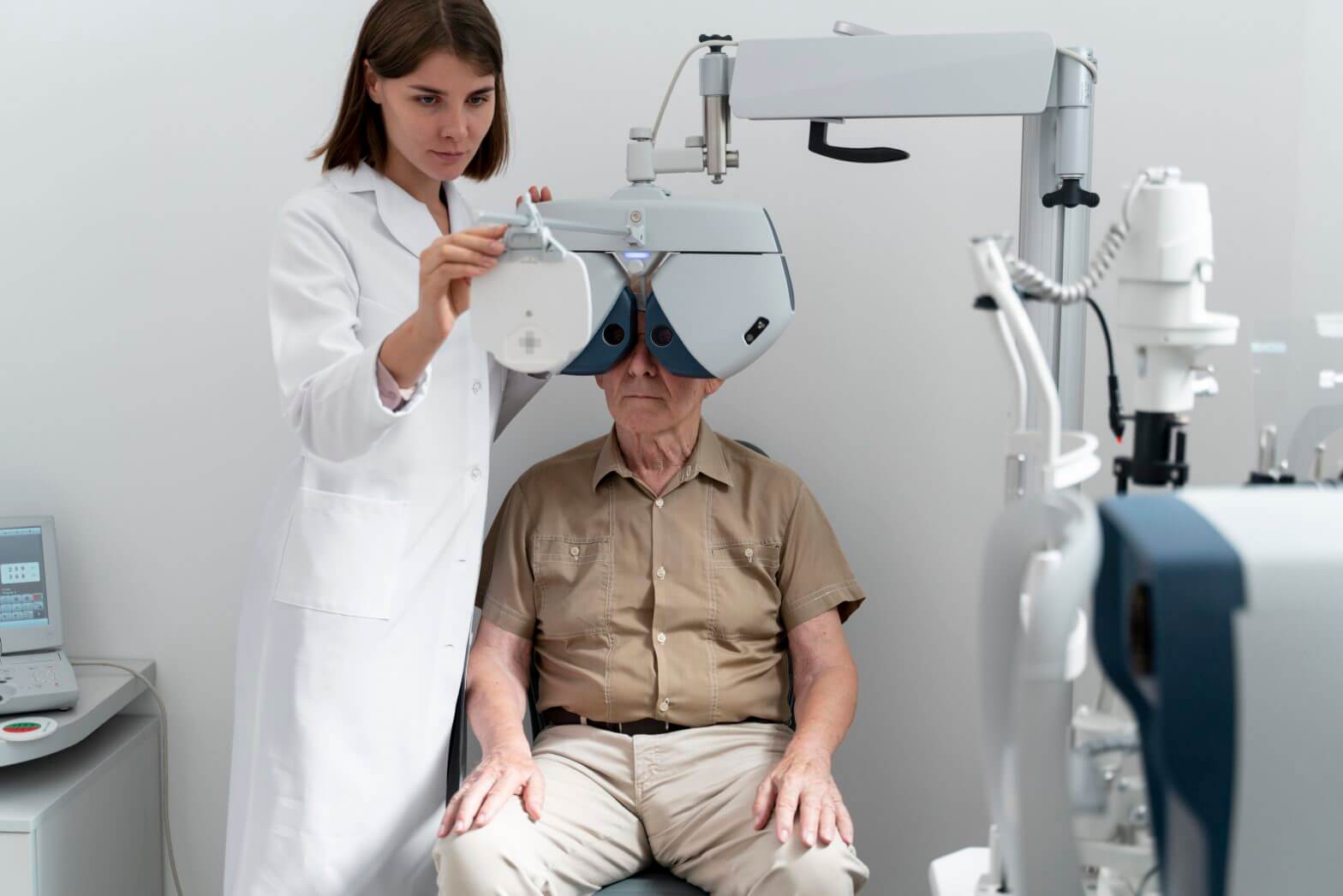Glaucoma is a serious eye condition that affects the optic nerve, leading to vision loss and potentially blindness if left untreated. Cataracts, another common eye condition, involve clouding of the eye’s lens. While both affect vision, they are distinct conditions with different causes and treatments. Here’s a breakdown of glaucoma and its comparison with cataracts:
What is Glaucoma?
- Glaucoma primarily affects the optic nerve, which transmits visual information from the eye to the brain.
- Increased pressure inside the eye, known as intraocular pressure (IOP), damages the optic nerve over time.
What are the Symptoms?
- In the early stages, glaucoma may not cause noticeable symptoms.
- However, as the condition progresses, individuals may experience peripheral vision loss, tunnel vision, blurred vision, halos around lights, and eye pain or headaches.
How Can You Treat Glaucoma?
- While there is no cure for glaucoma, treatments aim to reduce intraocular pressure to prevent further damage to the optic nerve.
- Treatment options include prescription eye drops, oral medications, laser therapy, and surgical procedures like trabeculectomy or shunt implantation.
Regular Monitoring
People at risk for glaucoma, including those with a family history, should undergo regular eye exams to detect the condition early.
Early detection and treatment can help preserve vision and slow the progression of the disease.
What are Cataracts?
Lens Clouding
- Cataracts involve the clouding of the eye’s natural lens, which lies behind the iris and pupil.
- This clouding progressively impairs vision by reducing the amount of light that reaches the retina.
What are the Symptoms?
Symptoms of cataracts include blurry or cloudy vision, faded colours, difficulty seeing at night, increased sensitivity to glare, and frequent changes in eyeglass prescription.
What are the Treatment Options?
The only effective treatment for cataracts is surgical removal of the cloudy lens and replacement with an artificial intraocular lens (IOL). Cataract surgery is a common and safe procedure that can significantly improve vision and quality of life.
Glaucoma vs. Cataracts
- Affected Structures: Glaucoma primarily affects the optic nerve, while cataracts involve clouding of the eye’s lens.
- Vision Impairment: Glaucoma causes gradual peripheral vision loss, whereas cataracts lead to progressively blurred vision.
- Treatment Approach: Glaucoma treatment focuses on reducing intraocular pressure to prevent optic nerve damage, while cataract treatment involves surgical removal of the cloudy lens.
- Age Factor: While both conditions are more common in older adults, cataracts are a natural part of aging, while glaucoma can occur at any age, often with a genetic predisposition.
Hence, glaucoma and cataracts are distinct eye conditions with different causes, symptoms, and treatments. Early detection through regular eye exams and prompt treatment are crucial for preserving vision and maintaining eye health. If you suspect any changes in your vision or have a family history of eye diseases, consult an eye care professional for proper evaluation and management. Do not ignore your eye trouble. Now, you can reach out to our ophthalmologists at Dr Agarwals Eye Hospital for all kinds of eye issues. Call Us 9594924026 | 080-48193411 to book your appointment now.








